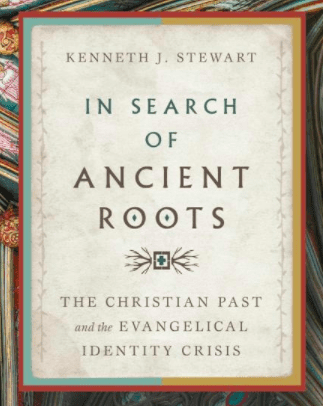 Kenneth Stewart nails it with this opening to his new (and important) book called In Search of Ancient Roots: The Christian Past and the Evangelical Identity Crisis.
Kenneth Stewart nails it with this opening to his new (and important) book called In Search of Ancient Roots: The Christian Past and the Evangelical Identity Crisis.
My words: we need to bury the term “evangelical.” I represent his second group.
Here are his words and my emphasis:
Evangelical Christianity is now a surging global phenomenon. Such writers as Philip Jenkins, David Martin, and David Aikman have reported that Africa, Latin America, and Southeast Asia’s Christian future looks increasingly “evangelical” in the sense of embracing Biblicist, Christ- and cross-centered, conversionist, and Holy Spirit-oriented Christianity. But in western Europe and North America (the regions from which pietistic and evangelical expressions of Protestant Christianity were transmitted to the global church), the current era is one of increasing introspection and self-doubt (1).
Why this crisis of identity? Why are there so many who doubt the term “evangelical”? Stewart proposes a three-fold answer, but his answer is mostly shaped by theological concerns as if the term “evangelical” is merely theological:
(1) The run-down factor.
These are, first, the increasing distance of space and time from the period of evangelical origin and a resulting “run-down.” Original ideals and guiding principles can lose their edge over time. … Yet given the theological tumults of the early twentieth century, all forms of evangelical Christianity (Restorationist included) tended to navigate in this era by “lightening the ship”—that is, by insisting on fewer essentials of the faith in the interests of defense and propagation (3).
(2) The lateral factor.
But this crisis-driven process of “lightening the ship’ went hand in hand with a second difficulty that I will call the “lateral factor.” In the early twentieth century, ever-larger portions of evangelical Christianity came to be located outside the denominations that had traced their lineal descent from the Reformation movements. … Thus, evangelicals who remained within historic denominations viewed the pre-Reformation centuries more favorably than did those who aligned themselves with Holiness or Bible or independent churches. After all, Anglican, Presbyterian, and Methodist congregations continued to bear the names of pre-Reformation saints (such as St. George, St. Andrew, St. Columba). Now, these distinguishable stances of the historic Protestant churches compared to independent church movements were also transmitted through crosscultural missions to the non-Western world. … To speak in general terms, offshoots of Europe’s historic Protestant churches were more likely to find things of value in pre-Reformation Christianity, while the more independent type of evangelical Protestants were less inclined to seek things of value in what came before the Reformation era. It was easily supposed that there was little of value until Luther came on the scene (3-4).
(3) The thaw in Protestant-Catholic relations.
Awhile the division of Western Christendom into Protestant and Catholic was still lamented, Vatican II laid on Roman Catholicism some of the responsibility for this permanent rift. Instead of insisting that only clergy and the church hierarchy could safely interpret the Bible, rank-and-file Catholic believers were now encouraged to own and study the Bible in an accurate translation—of which several were rapidly produced directly from the original languages. Church services, formerly conducted in Latin, were now encouraged in the vernacular of the population (5).
Roman Christianity, now viewable in an improved light, proved to be especially of interest to two types of evangelical Protestants: (1) those whose lateral distance from the classical Protestant movements had left them quite unprepared for understanding the 1,500 years of Christianity before Protestantism and who easily felt a kind of “allure” toward Rome’s claims to antiquity and unbroken succession, and (2) beleaguered Christians in the historic Protestant churches who believed that they were witnessing a retreat from biblical authority and the unique role of Jesus Christ as only savior, for which their historic Protestant churches had been known (5).
Stewart, one of the most judicious scholars I read, sees two fundamental problems in the evangelical identity crisis. (This book comes for me at the right time, and I do hope he takes on the politicization of American evangelicalism.)
In brief, this book will argue first that too many evangelicals today are failing to grant that evangelical movements are perennial and recurring. … If evangelical Christianity’s existence were to be accepted as something perennial and recurring, we would feel less of an inclination to apologize for its continued existence and expansion (7).
The book will argue second that appropriation from the pre-Reformation Christian past is both acceptable and welcome provided that it is done according to some agreed principle. I can assure readers that there has in fact been no evangelical “cover-up,” no conspiracy to deflect curious evangelical believers away from “neutral” pre-Reformation liturgies, devotional practices, and forms of discipleship. What there has been is a range of approaches (some much more defensible than others) by which pre-Reformation Christianity was “weighed” on scales that yielded the judgment that some elements of earlier Christianity were defective. …: that Jesus Christ fully intended to guide his church by the Holy Spirit speaking in Scriptures entrusted to the whole people of God (7-8).
But what happens, I shall be asking as we go through this book, if a theological term becomes a political term?











